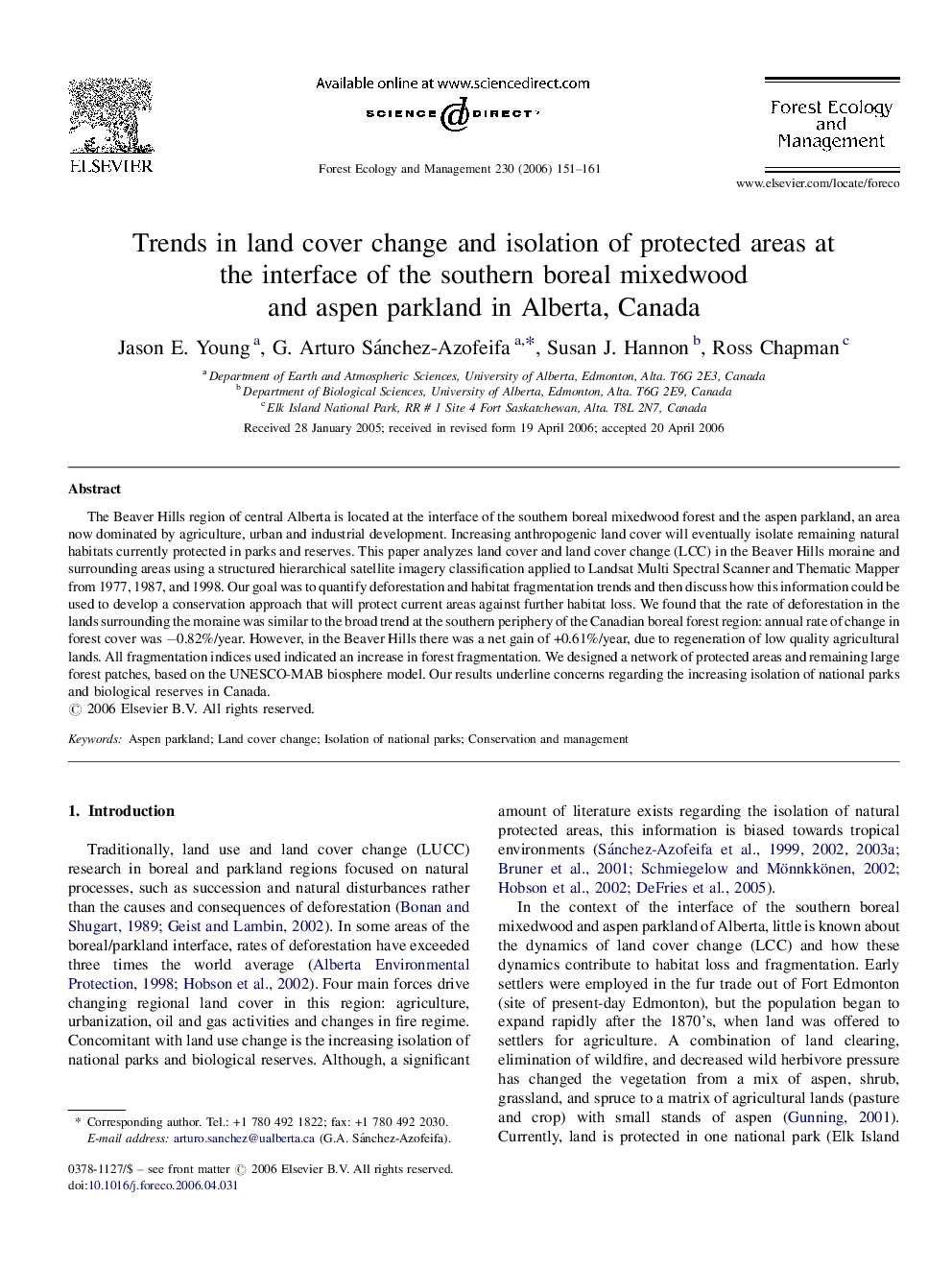| Article ID | Journal | Published Year | Pages | File Type |
|---|---|---|---|---|
| 90438 | Forest Ecology and Management | 2006 | 11 Pages |
The Beaver Hills region of central Alberta is located at the interface of the southern boreal mixedwood forest and the aspen parkland, an area now dominated by agriculture, urban and industrial development. Increasing anthropogenic land cover will eventually isolate remaining natural habitats currently protected in parks and reserves. This paper analyzes land cover and land cover change (LCC) in the Beaver Hills moraine and surrounding areas using a structured hierarchical satellite imagery classification applied to Landsat Multi Spectral Scanner and Thematic Mapper from 1977, 1987, and 1998. Our goal was to quantify deforestation and habitat fragmentation trends and then discuss how this information could be used to develop a conservation approach that will protect current areas against further habitat loss. We found that the rate of deforestation in the lands surrounding the moraine was similar to the broad trend at the southern periphery of the Canadian boreal forest region: annual rate of change in forest cover was −0.82%/year. However, in the Beaver Hills there was a net gain of +0.61%/year, due to regeneration of low quality agricultural lands. All fragmentation indices used indicated an increase in forest fragmentation. We designed a network of protected areas and remaining large forest patches, based on the UNESCO-MAB biosphere model. Our results underline concerns regarding the increasing isolation of national parks and biological reserves in Canada.
